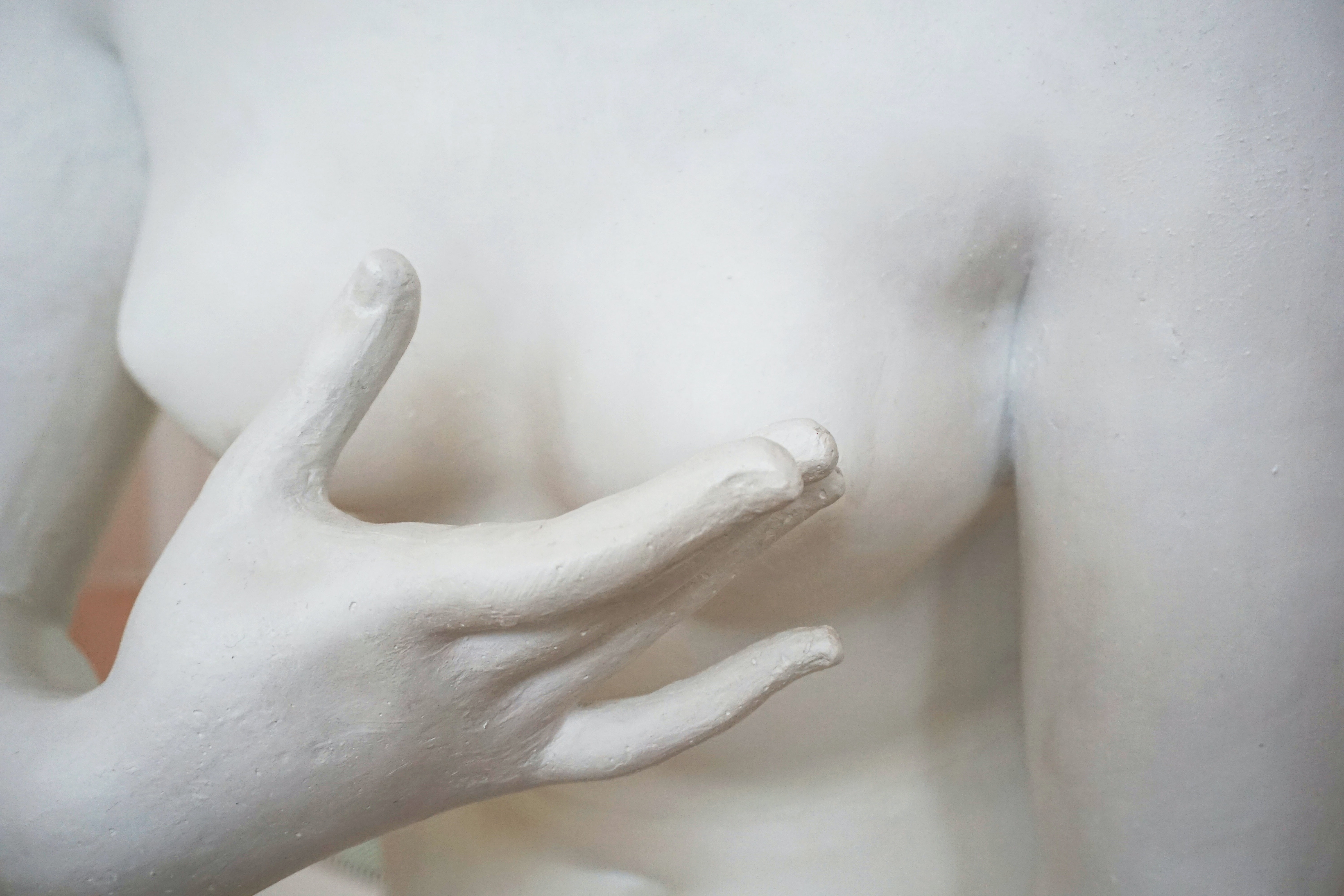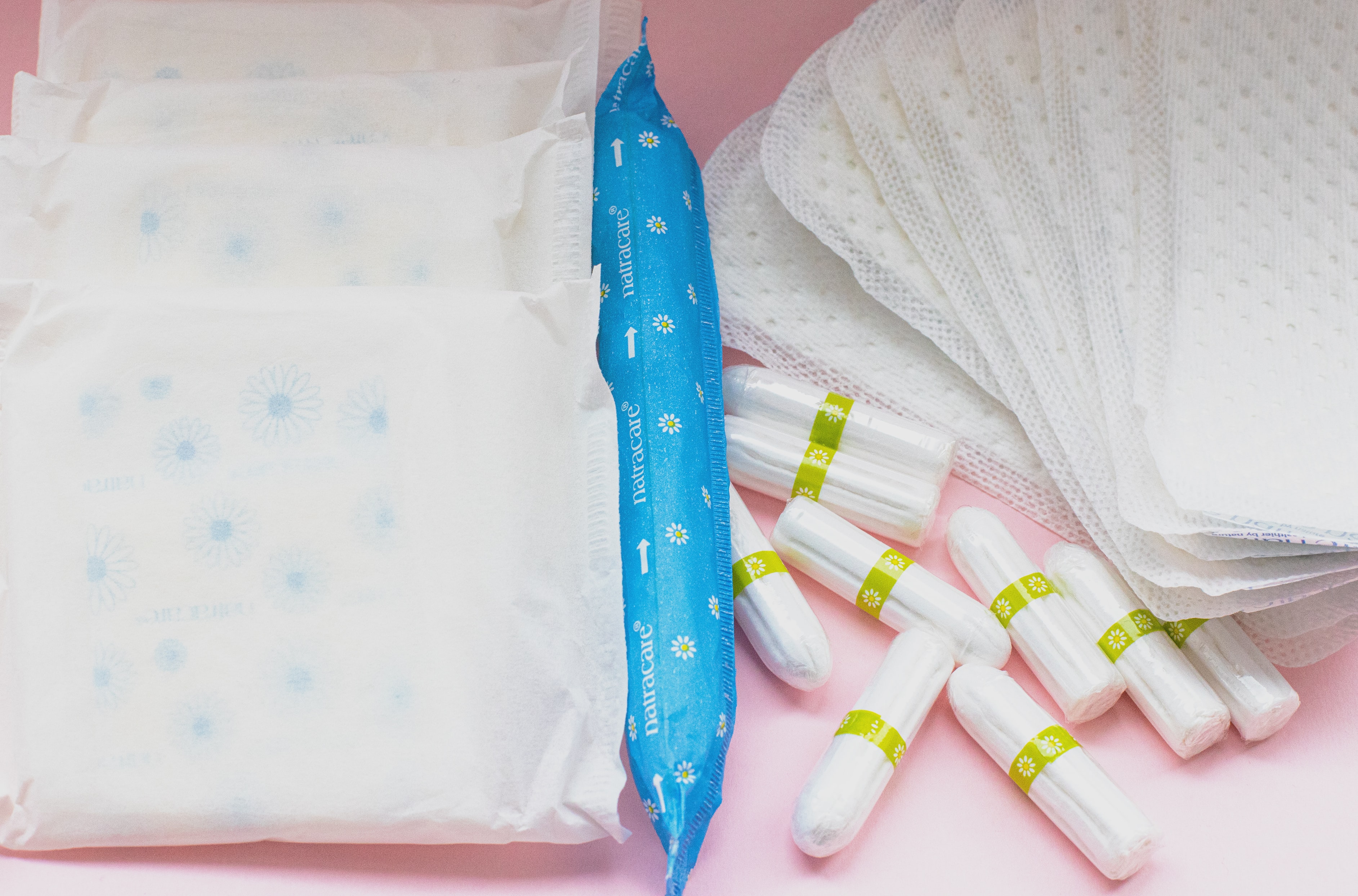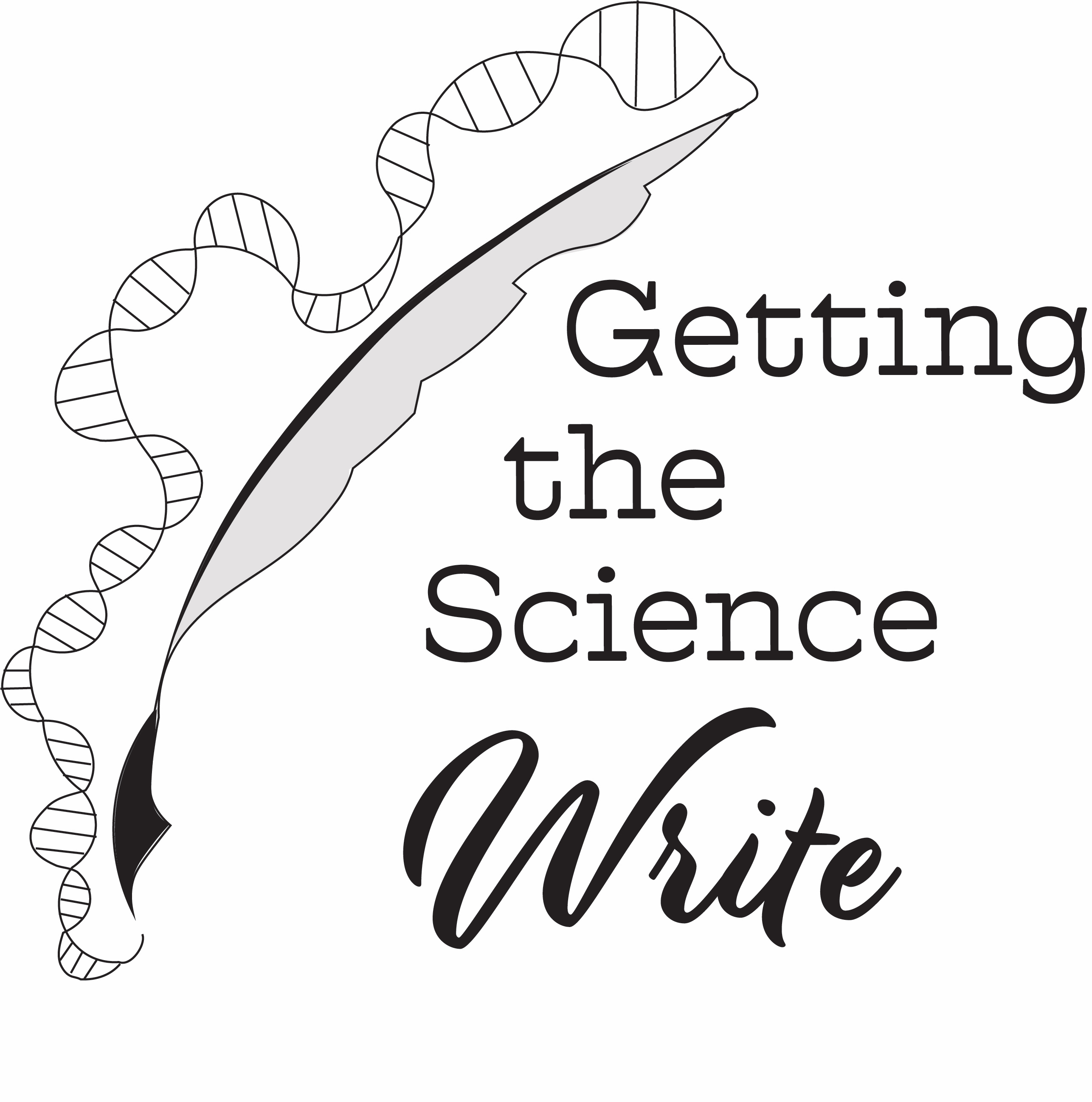Writing Females, Part 1 (Yes, We're Going There)
This post may be a bit of an oddity amongst my other topics.
Or perhaps it’s one that people have been expecting from me for a while now.
This has been in the making since the beginning of 2022. I originally began drafting a post concerning “how not to use science,” which was more concerned with the vices I found in fiction that included female representation. It wasn’t until almost mid 2022, exactly around the time that Roe v Wade was overturned, that this post became personal.
Now, I fully realize that the overturning of Roe v Wade is not the only injustice this year. But I turn our attention to it because the rhetoric surrounding the decision revealed just how many logical fallacies exist concerning the female internal workings.
It made me finally question, do we as a culture actually understand even the most fundamental basics of female anatomy?
This blog post is not the post to argue over abortion rights and female autonomy. I ultimately decided that my current role as a science communicator is to discuss provable facts, not necessarily the politics (although science is far from a-political. While science communication and politics can and should go hand in hand, I have yet to carve that niche out for myself). And thus was this post written in that spirit.
So why focus on depictions of females in fiction, of all places? Well, stories reinforce societal “facts,” despite these very “facts” being born and bred from pseudoscience (aka not real science). Perhaps you’ve heard of these “facts”? “Females are more emotional.” “Females are weaker.” I have been told, in both subtext and blatant statements, that “females are less intelligent than males” and “females are destined to become mothers” (because having a uterus clearly means one must use it… Heavy sarcasm for this statement, friends).
And so, we must discuss the topic of sex. The uterus. The clitoris. The vagina. The menstrual cycle. The breasts (although not all females have all these).
Before we continue, I must confess that there will be fewer citations/links in this post. While I am admittedly conflicted about this, I must also remind myself that I am, in fact, a female, and have been for almost three decades. Shockingly, I am an expert in the basics of female bodily function. My source is the conglomeration of skeleton, organs, and hormones that I drive around daily as a “female body.”
Alright. Let’s Talk about Sex

Not the action (this is not that type of post). There will be no sexy-saxophone playing here. I’m talking about the so-called “sex binary,” what makes humans male or female. The sex chromosomes, XY or XX. A penis versus a vagina… except it’s not really an “either-or” situation.
Sex is far from binary. Nature loves to write biological code, and then break said code in every possible way at every possible chance (I’m looking at you, platypus). There are intersex folk who have XX or XY (known as a karyotype) and yet can have ambiguous genitalia. There are folks with XXY, XYY, X0, and so many more sex chromosomal makeups. For a concrete example, there is a study looking at a woman who had the XY karyotype and gave birth multiple times.
This is pretty much all taken out of my genetics textbook. Biology majors know that sex is not only limited to XX and XY, and that is something we take advantage of for studies. Examining case studies where individuals have gained/lost a sex chromosome, or removing a sex allele in an animal model, can allow scientists to study what exactly a given sex chromosome can do.
Now, I want to point out that I am, at no point, going to talk about “women.” This is because “women” is a gender term, and has everything to do with anthropology/sociology, not biology. This is taken directly from Amy M. Blackstone’s “Gender Roles and Society”:
“Sex and gender are different concepts. Sex is a biological concept, determined on the basis of individuals’ primary sex characteristics. Gender, on the other hand, refers to the meanings, values, and characteristics that people ascribe to different sexes…[Gender] is a concept that humans create socially, through their interactions… yet it relies heavily upon biological differences between males and females.”
While gender is certainly informed by biology, it ultimately is a fluid concept crafted by society and the individual. So yeah, not my field!
For the purposes of this post, I will be discussing “females” as defined by those with XX chromosomes, with uteruses, and not undergoing hormone therapy. I will not be discussing intersex individuals, folks who have different sex karyotypes, etc. NOT because they don’t exist, but because I am only one immunology graduate student writing a blog and can only discuss so much in a single blog post without writing a full-blown dissertation.
But, for an actual expert on this, check out Forrest Valkai’s video for a discussion on how freaking complicated sex is in nature and humans (TW: he pulls out suicide rates at the end of the discussion. It makes a lot of sense in context).
We Come Abreast to the Most Expected Blog Section

I’m sure most folks who read my blog may be convinced that I am anti-breasts, as I take every opportunity to openly rant about their use in fiction.
I actually don’t mind breasts. They are mammary glands. A lot of people have them. Some choose to remove them, or modify them. And quite frankly, they are a part of many a female’s life no matter what size they are. Many cultures ascribe meaning to them (to my great annoyance). Some require that you cover them up, others make it socially acceptable to present them. I actually enjoy reading about a female who is very comfortable with their breasts, or even proud of them (because we love body positivity). I also love reading about females who don’t mention their breasts, or even don’t have them.
What I don’t like is when characters are written to where they are breasts and only breasts. Where I must read about the breasts as the major feature of a female or feminine presenting character, I’m going to put the book down or have a moment to fume. Fun fact: it’s super creepy to have a male author describe how perky a young teenager’s breasts are, or how the first descriptions of the single female character obsesses over how curvy their chest is.
Spoiler alert: Females do not equate to “breasts with a mouthpiece.”
And yet… the amount of authors out there who do just this… here, this is the famous reddit page “men writing women”. This should explain my disdain for this apparent trope.
What are breasts, on a basic scientific level? Well, as mammary glands, they are a structure on top of the pectoral muscles that is composed of lobules (mammary glands) that produce milk, milk ducts that lead the milk to the nipple, and fatty tissue. Throughout this structure, we also have fibrous tissue, Cooper’s ligaments, the lymphatic system, and—surprise— nerves! I point this out because breasts are erroneously treated as just sacks of water that just bounce here, there, everywhere.
Breasts are complex structures. They can shrink or grow for a wide variety of reasons beyond just gaining or losing weight. They can change size due to the amount of estrogen in one’s body. One may be genetically disposed to having more fibrous tissue or fibrocystic (small cysts) changes in breasts, leading to grainy breasts.
Breast size may decrease due to exercise. Breast size may also increase the more one develops their pectoral muscles because they are right on top of the muscle. Just because a female is a fighter of some kind does not mean that they must therefore have “x-sized” breasts. They can become more sensitive or painful, called mastalgia, due to lack of support, trauma, menstrual cycle, or cysts.
Mammary glands are complicated organs that females interact with outside of sexual activities. So it’s not the breasts that are an issue.
It’s how breasts are subsequently treated. The cartoon levels of sexualization that are just accepted in fiction, movies, you name it. Breasts are not little water balloons that can bounce around willy nilly, breasts are sacks of tissue attached to muscles and nerves that contain nerves. Translation: They. Can. Hurt. A. Lot. Just by hanging there, breasts exert force on the spine. That’s not considering when a female is in motion. It can hurt to run (again, the breasts contain nerves that have forces exerted on them during physical activity), so wearing a sports bra is a necessity for many. If your female character is active and has not had any mastectomies, they 100% would be giving support and protection to their breasts. The less the chest moves, the happier the active character.
Hence why I have issues with “boob armor.” Besides just the blatant sexist design, the “boob armor” would be fundamentally painful to fight in. The breasts have no support, meaning the tissue will be insanely sore after a few swings. If they shoot a bow, they will have bruising across their breasts and/or nipples. The chaffing from the breasts swinging around in the partial armor horrifies me: remember, the mammary glands still have NERVES in them! (And I’m not even touching on how this armor design is also a big-ol’ “hit me” target with no protection to your vital organs).
While I am pretty sure the Amazonian myth of “Amazons cutting off/binding the right breast to improve archery skills” isn’t real based on what I’ve read, it’s not a surprising myth to buy into. One does in fact need to strap down breasts (but not cut off, self-mutilation seems way to extreme) or change how you fire a bow to deal with drawing your bow. Or specifically say they use a chest guard. Something!
Also, quick note on the whole “nipple-erection” to indicate sexual arousal: it can happen. I have never experienced it, nor have I met a fellow female who has experience this as they are going about their day, but apparently nipple erections are a thing. (I learn so much from writing these blog posts). THAT SAID, the whole “arousal = hard nipples” just thrown into a scene to depict sexual attraction while a character is out in public is flat-out weird (source= me, a female, and multiple other female friends). If male characters are not going to have spontaneous erections while noticing an attractive female at a dinner scene, I can assure you the reverse is also applicable for females, and most are not having spontaneously hard nipples when they see someone hot.
If anything, hardened nipples during one’s everyday life is probably indicating that the room is super cold, and one needs to wear a coat ASAP.
Let’s Talk About Periods. Period.

Say it with me:
Period.
Menstruation.
Uterus.
Free bleeding.
Tampon.
Pad.
The forbidden words, not just in fiction but also IRL. We will use every euphemism possible, “visit from Aunt Flo,” “that time of month,” “crimson tide,” and apparently “shark week,” but heaven forbid we use the actual word for it in the presence of (gasp) males. The thing that happens almost monthly for almost 50% of the population is treated like a cult, spoken only behind walls, the members wielding tampons and pads for their wands as they make blood sacrifices to the forbidden deities (Insert spooky ghost noises).
Is it too much to just admit that once a month, after building up a layer of bloody tissue within the walls of the uterus, females shed that tissue through their vagina due to fluctuations in hormonal levels? Yeah, it’s a mouthful, but it happens monthly!
(I’m not going to go into the biology of the menstrual cycle on this post just, but you can find a fantastic description here for a more in-depth description of what happens hormonally throughout a female’s menstraul cycle.)
I remember the first time I read menstruation in a novel was in Jim Butcher’s Codex Alera series. And the character didn’t even say the word, she was just cramping. Up until that point, I just assumed that females in the novels I read were superhuman. “Thou shalt never bleed…Or cramp. Or bloat. Or get acne.”
If you have two or more female characters, chances are that they will discuss periods. Their length, how heavy they are, what products they use, how bad cramps are, you name it. Now, you don’t have to show that discussion, but the fact that I have truly never seen even small talk among a close-knit group of characters is just… sad.
Unless menstruation is the whole plot. Stephen King’s “Carrie,” anyone? I personally have issues with these stories because periods are usually set in the real world (not usually a fantasy setting) and describe the period as something to be overcome, an alien experience to be dealt with. Some kind of enemy to face, rather than just a part of life. Or they stress the whole “rite of passage” aspect of periods, which, as we’ll see below, I can have issue with depending on how it’s handled.
Like, even just a mention of the period symptoms beyond bleeding and irritability would be refreshing to read about. Cramps can range from annoying to crippling. Indigestion is a common one. Fluid retention can be annoying and uncomfortable. Some can have flu-like symptoms right before their bleeding. Every female that menstruates, be it in fiction or IRL, has their own unique set of period symptoms.
Things to be aware of when incorporating periods into your stories: When you lose your period and you aren’t pregnant, that’s BAD. That’s called amenorrhea. Things that can cause loss of period include stress, excessive exercise, and unhealthy weight loss, and that can actually lead to a whole slew of biological issues. It can affect metabolism, bone health, you name it. Which is why a female character should be keeping track of time between periods, especially if they’re quite active.
As to how your character handles their period throughout the story is dependent on your setting. They may be without a pad/tampon while camping, and they may have to improvise (to their annoyance). Perhaps their culture has a specific area folks on their period hang out while they bleed. Maybe they have to free bleed because they didn’t notice their period started and hours later, they look down and groan to see their pants in blood. Or they choose to free bleed. Or they don’t have access to the necessary sanitation. Perhaps their culture views menstruation as unclean, but MAYBE you can write in a fictional culture where periods are just normal, positive experiences even.
Do you need to explain why a character is not in a scene? Congrats! That character now has period cramps and is going to curl up for a bit on their own. Want your female characters to bond? Have one provide a sanitary pad to the other as bleeding begins. Want your male and female characters to bond? Have the male characters always carry around tampons “just in case” their friends start menstruating! Don’t want to deal with periods? Your female character can be on birth control now!
Menstruation Does Not Equal Adulthood
CW: Hints of forced child pregnancy.
I am going to pause my scientific rhetoric here and get a little personal: I had my first period when I was 10. I did not suddenly become an adult capable of carrying a child because I had a period. I was still —say it with me— ** a child.** If you’re writing historical fiction where that was the historical culture, I can maybe overlook it, but otherwise, please don’t make a child’s first period their fast pass into adulthood. I’ve never heard of young males suddenly being considered full-fledged adults from their first wet dream. Don’t do it to young females.
It would be amazing for periods to be celebrated as a **step ** into adulthood and not marked as shameful, but it’s so creepy when people say “you’re all-grown up now” to a child because they start menstruating. They are still a child. Their brains are still in development, and will be in development until they are 24 years old They literally just started the long process of puberty. This here is a quick look at just how much a child’s brain will begin to change at the start of adolescence, just to drive this point home.
And don’t make a huge deal out of it when it does happen to a character. A female does not magically change like a butterfly into an adult overnight just because they start bleeding. It is not a spectacular metamorphosis; it is just a part of life. Starting my first period was one of the most benign inconveniences I’ve ever had, especially since most females my age were also getting theirs.
I did not grow as a character. I did not have a spiritual awakening or go on a sojourn of self-discovery. I just had to find a pad.
End of Part 1: Takeaways?
What was originally one huge post has been broken up, because it turns out I can talk a lot about anatomy that has been misrepresented in fiction and media.
And I spent this long on just the basics because we need to normalize the female body in fiction. Again, fiction is where we repeat truths to ourselves. It’s a place where we pick up on societal beliefs. If the female body is treated with respect in your fiction, and not as an unclean, sexual alien entity, that can be perpetuated in real life.
Or at least I hope so.
Part 2 is coming, but I want to dive more into a few of the myths surrounding females, like “being more emotional” or being “weaker” than males.” Stayed tuned!
